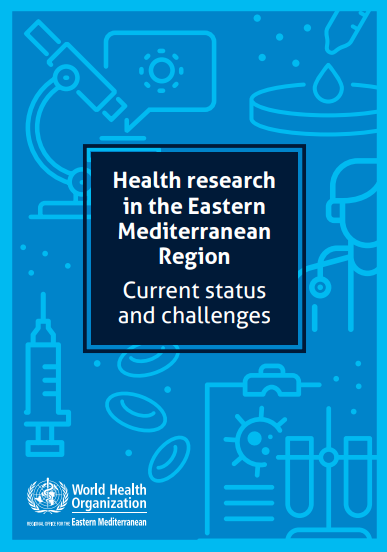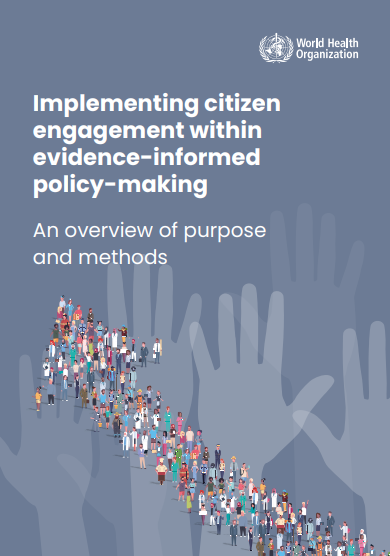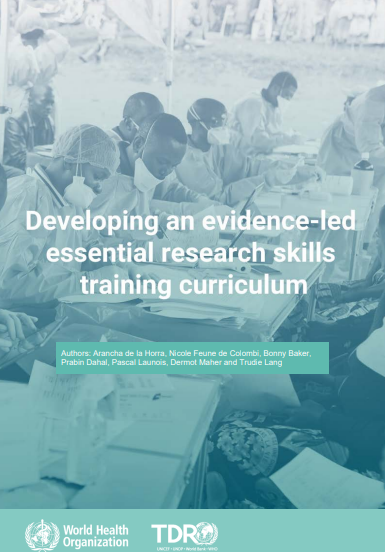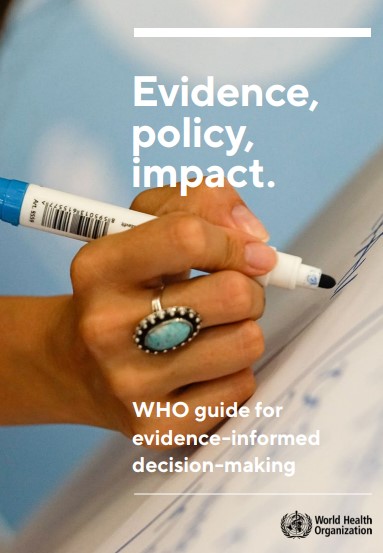Cairo, 25 January 2018 - As a result of collaborative work between the World Health Organization (WHO) and several academic institutions, an important tool has been developed to streamline use of qualitative research evidence in public health decision-making. A series of academic papers published in the Implementation Science journal this week provides a scientific tool for assessing how much confidence to place in findings from qualitative evidence syntheses. The tool known as CERQual (Confidence in the Evidence from Reviews of Qualitative research) has been designed to help decision-makers use qualitative evidence for decisions and policies about health care and social welfare. CERQual is a new addition to GRADE, which is a systematic and explicit mechanism for making judgments about the quality of research evidence and assessing the strength of its recommendations.
Why is this new qualitative research tool (GRADE-CERQual) important?
Recommendations and decisions made by the experts, who develop public health guidelines are based extensively on quantitative findings from systematic reviews of randomized controlled trial studies. Such findings provide, for example, evidence of the advantages and disadvantages of using one type of medicine against another in the treatment of a disease. However, making decisions in health care also requires attention to other aspects of service delivery and context of care, which are better captured in qualitative research studies.
Decision-makers and guideline development panel members come across various issues when they want to support or reject a potential recommendation. Queries like: “How feasible is the implementation of the recommendation in the field? Is it going to be acceptable to doctors, nurses and other health professionals? How will it affect the perception of patients and users of care? Will it be culturally acceptable?” Well-conducted individual qualitative studies provide some answers to these questions, but they are often bound to limited settings (e.g. perceptions of mothers and midwives in one hospital about a new model of care). The other limitation is that such queries are often posed in a non-systematic and non-transparent way.
Deeper understanding of such concerns requires systematic reviews of qualitative studies, also known as “qualitative evidence syntheses”. Findings from such syntheses can help provide evidence on people’s views of health and social care issues, about whether interventions are acceptable to the people affected by them, about the feasibility of interventions, and about a range of other factors that are likely to influence implementation.
In light of increasing need for such syntheses to inform decisions about health and social policies, it was important to develop methodological concepts and tools to guide the level of confidence that can be put in the findings of qualitative syntheses. Hence the GRADE-CERQual approach is a significant development. It helps decision-makers rely on qualitative syntheses by indicating how much confidence they should place in each finding. It is hoped that with CERQual approach, use of qualitative evidence will be encouraged further in national and global health decision-making processes.
“The importance of qualitative data is increasingly recognized when producing recommendations in public health, as these recommendations must reflect far more than the balance of benefits and harms of an intervention as measured quantitatively. Data on acceptability and feasibility, for example, are invaluable when formulating recommendations and when adapting them to the local context. The CERQual approach has been vital in helping us to use qualitative evidence appropriately,” said Dr Susan L Norris, Secretary of the WHO Guidelines Review Committee, on the occasion of publishing the series of academic papers on the tool.
The development of this approach started in 2010, in response to WHO’s need to improve the quality and usefulness of its guidelines. The GRADE-CERQual approach is already being used in guidelines published by WHO, the National Institute for Health and Care Excellence in the United Kingdom, the Swedish Council on Health Technology Assessment and the European Commission Initiative on Breast Cancer. The WHO Regional Office for the Eastern Mediterranean is promoting and facilitating use of such tools in the interest of informed decision-making in the field of public health.
“This is an exciting piece of work. The CERQual approach brings to the table the views and concerns that are important in the development of policies and their implementation, but are often ignored in making recommendations. More important, it provides a systematic and transparent approach for consideration of qualitative evidence. During the 64th session of the WHO Regional Committee for the Eastern Mediterranean, held in Islamabad, Pakistan, in October 2017, the Ministers of Health in the Region and WHO decided to enhance their efforts to foster institutionalization of using research evidence in health policy-making. Hence, this is also a timely development in that direction,” highlighted Dr Arash Rashidian, co-author of the studies and Director of Information, Evidence and Research at the WHO Regional Office for the Eastern Mediterranean.
Note to editors:
Series of seven academic papers on the GRADE-CERQual tool, published in the Implementation Science journal
This series provides detailed guidance on how to apply the GRADE-CERQual approach. Paper 1 gives an overview of CERQual’s rationale and conceptual basis, how the approach was developed, its aims, and its main components. Papers 3, 4, 5, 6 and 7 discuss each CERQual component, including how the component is conceptualized and how it should be assessed. Paper 2 discusses how to make an overall assessment of confidence in a review finding and how to create a summary of qualitative findings table.
The series is intended primarily for those undertaking qualitative evidence syntheses or using their findings in decision-making processes, but is also relevant to guideline development agencies, primary qualitative researchers and implementation scientists and practitioners.
The tool development received funding from the Alliance for Health Policy and Systems Research, Cochrane, Norad, the Research Council of Norway and WHO.
Related link
GRADE-CERQual papers are freely available on the Implementation Science website









